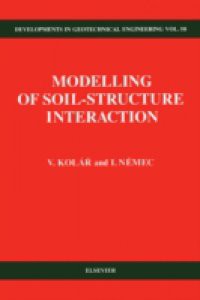Distributed in the East European countries, China, Northern Korea, Cuba, Vietnam and Mongolia by Academia, Prague, CzechoslovakiaThis book is based on the efficient subsoil model introduced by the authors in 1977 and applied in the last ten years in the design of foundations. From the designer's point of view, the model considerably reduces the extent of the calculations connected with the numerical analysis of soil-structure interaction. The algorithms presented are geared for use on mini- and personal computers and can be used in any numerical method. A special chapter is devoted to the implementation of the model in the NE-XX finite element program package, illustrated with diagrams, tables and practical examples.Besides presenting the energy definition and general theory of both 2D and 3D model forms, the book also deals with practical problems such as Kirchhoff's and Mindlin's foundation plates, interaction between neighbouring structures, actual values of physical constants of subsoils and natural frequencies and shapes of foundation plates.Today, researchers and engineers can choose from a wide range of soil models, some fairly simple and others very elaborate. However, the gap which has long existed between geomechanical theory and everyday design practice still persists. The present book is intended to suit the practical needs of the designer by introducing an efficient subsoil model in which the surrounding soil is substituted by certain properties of the structure-soil interface. When a more precise solution is required, a more sophisticated model form can be used. Its additional degrees of deformation freedom can better express the behaviour of layered or generally unhomogeneous subsoil. As a result, designers will find that this book goes some way towards bridging the above-mentioned gap between structural design theory and day-to-day practice.

